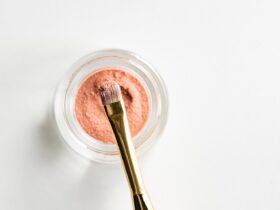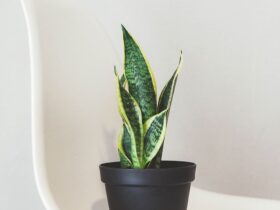Introducción
Perfume atomizers are ubiquitous in the fragrance industry, providing a convenient and efficient way to dispense scent. While the overall design of an atomizer is important, a critical component often overlooked is the nozzle. The nozzle is the final point of contact between the liquid perfume and the air, and its design and characteristics significantly impact the overall performance of the atomizer. This article will delve into the intricate role of nozzles in perfume atomizer performance, exploring the factors that influence their effectiveness and how they contribute to the user experience.
Understanding the Atomization Process
Before examining the nozzle specifically, it’s essential to understand the atomization process itself. Atomization is the process of breaking down a liquid into fine droplets, creating a mist or spray. In perfume atomizers, this is typically achieved through pressure. When the user presses the actuator, pressure is applied to the liquid perfume within the reservoir. This pressure forces the perfume through a small orifice – the nozzle – at high speed. The high-speed impact with the surrounding air shears the liquid into tiny droplets, forming the aerosol spray.
Nozzle Design and Materials
The design of the nozzle is paramount to achieving optimal atomization. Key factors include:
- Orifice Size: The diameter of the opening through which the perfume is ejected directly influences the droplet size. Smaller orifices tend to produce finer mists, which are often preferred for perfumes as they create a more even and diffused scent experience. Larger orifices, on the other hand, may produce coarser sprays, which might be more suitable for applications requiring a higher volume of liquid to be dispensed quickly.
- Orifice Shape: The shape of the orifice can also affect the spray pattern and droplet size. Common shapes include circular, elliptical, and specially designed geometries aimed at enhancing atomization. The shape can influence the fluid dynamics as the perfume exits the nozzle, impacting how the liquid breaks apart.
- Internal Geometry: The internal channels and chambers leading up to the orifice play a crucial role in controlling the flow of perfume and ensuring consistent pressure. Well-designed internal geometry can minimize turbulence and promote laminar flow, leading to a more uniform and predictable spray.
- Nozzle Material: The material used to construct the nozzle must be compatible with the chemical composition of perfumes, which often contain alcohol, oils, and other volatile compounds. Common materials include stainless steel, glass, ceramics, and certain types of plastics. Stainless steel is frequently chosen for its durability, corrosion resistance, and ability to be precisely machined. Glass nozzles are aesthetically pleasing and inert, but they are more fragile. Ceramic nozzles offer excellent wear resistance, while plastic nozzles are cost-effective but may be susceptible to degradation over time.
Factors Influencing Nozzle Performance
Several factors directly influence how effectively a nozzle performs in a perfume atomizer:
- Pressure: The pressure applied to the perfume as it passes through the nozzle is a critical determinant of droplet size and spray velocity. Higher pressure generally results in finer droplets and a more forceful spray. The design of the pump mechanism within the atomizer is crucial for generating consistent pressure with each actuation.
- Viscosity: The viscosity of the perfume itself affects its atomization characteristics. More viscous liquids require higher pressure to atomize effectively and may produce larger droplets. Perfume formulations are carefully balanced to ensure optimal viscosity for atomization.
- Surface Tension: Surface tension is the property of a liquid that causes it to resist an external force. Higher surface tension makes it more difficult to break the liquid into droplets. The addition of surfactants or other additives to perfume formulations can reduce surface tension and improve atomization.
- Nozzle Cleanliness: Blockages within the nozzle, caused by dried perfume or particulate matter, can severely impair atomizer performance. Regular cleaning and maintenance are essential to prevent clogs and ensure a consistent spray pattern. Some atomizers feature self-cleaning mechanisms to mitigate this issue.
- Ambient Conditions: Temperature and humidity can influence the evaporation rate of the perfume droplets after they are sprayed. In hot, dry conditions, the droplets may evaporate more quickly, leading to a weaker scent experience.
Impact on Spray Pattern and Droplet Size
The nozzle is directly responsible for the spray pattern and droplet size distribution. A well-designed nozzle will produce a fine, even mist with a consistent spray pattern. This ensures that the perfume is evenly distributed over the skin, maximizing the scent’s impact and longevity.
- Spray Pattern: The spray pattern refers to the shape and uniformity of the spray cloud. Ideal spray patterns are typically conical or elliptical, providing a wide coverage area with minimal gaps. Nozzle design and internal geometry are crucial for achieving the desired spray pattern.
- Droplet Size Distribution: Droplet size distribution refers to the range of droplet sizes within the spray. A narrow droplet size distribution, with mostly fine droplets, is generally preferred for perfumes. This creates a smoother, more diffused scent experience and reduces the likelihood of large droplets wetting the skin and causing uneven application.
Nozzle Clogging and Maintenance
One of the most common issues with perfume atomizers is nozzle clogging. This occurs when dried perfume residues or particulate matter accumulate within the nozzle, restricting the flow of liquid and impairing atomization. To prevent clogging, it is important to:
- Use High-Quality Perfumes: Perfumes formulated with high-quality ingredients and minimal particulate matter are less likely to cause clogging.
- Store Perfumes Properly: Store perfumes in a cool, dark place away from direct sunlight and extreme temperatures. This helps to prevent the perfume from degrading and forming residues.
- Clean the Nozzle Regularly: Periodically clean the nozzle by spraying warm water through it or using a specialized nozzle cleaning solution.
- Avoid Contamination: Avoid introducing dust, dirt, or other contaminants into the perfume bottle or atomizer.
Advancements in Nozzle Technology
Ongoing research and development efforts are focused on improving nozzle technology for perfume atomizers. Some of the key areas of innovation include:
- Microfluidic Nozzles: Microfluidic nozzles utilize micro-scale channels and chambers to precisely control the flow of liquid and achieve extremely fine atomization.
- Electrostatic Atomization: Electrostatic atomization involves applying an electrical charge to the liquid as it exits the nozzle, enhancing the breakup of the liquid into droplets.
- Ultrasonic Atomization: Ultrasonic atomization uses high-frequency sound waves to vibrate the liquid and create a fine mist.
- 3D-Printed Nozzles: Additive manufacturing techniques, such as 3D printing, are enabling the creation of complex nozzle geometries that were previously impossible to produce.
Conclusión
In conclusion, the nozzle is a critical component of perfume atomizers, playing a central role in the atomization process and significantly influencing the overall performance of the device. Factors such as nozzle design, material, pressure, perfume viscosity, and nozzle cleanliness all contribute to the quality of the spray. Advancements in nozzle technology are continually improving atomization efficiency and enhancing the user experience. Understanding the role of the nozzle allows consumers to appreciate the complexities involved in perfume delivery and to choose atomizers that provide the desired spray characteristics and scent experience.
Preguntas más frecuentes (FAQ)
Q: Why is my perfume atomizer not spraying properly?
A: The most common reason is a clogged nozzle. Try cleaning the nozzle with warm water or a specialized cleaning solution. Other possibilities include a malfunctioning pump mechanism or a low perfume level.
Q: How often should I clean my perfume atomizer nozzle?
A: It depends on usage, but generally, cleaning every few months is a good practice. If you notice a change in the spray pattern or a decrease in spray volume, it’s time to clean the nozzle.
Q: Can I use any cleaning solution to clean my perfume atomizer nozzle?
A: It’s best to use a mild cleaning solution specifically designed for atomizers or simply warm water. Avoid harsh chemicals, as they may damage the nozzle material.
Q: What type of nozzle material is best for a perfume atomizer?
A: Stainless steel is a popular choice due to its durability, corrosion resistance, and ability to be precisely machined. Glass is aesthetically pleasing but more fragile. The “best” material depends on the specific perfume formulation and desired price point.
Q: Does the size of the nozzle orifice affect the scent of the perfume?
A: While the perfume’s chemical composition determines the scent, the nozzle orifice size affects the droplet size and spray pattern, which can influence how the scent is perceived. Finer mists tend to create a more diffused and even scent experience.
Q: Are expensive perfume atomizers worth the investment?
A: More expensive atomizers often feature higher-quality materials, more precise nozzle designs, and more reliable pump mechanisms. This can translate to a better spray pattern, more consistent atomization, and a longer lifespan. However, a well-maintained and properly functioning less expensive atomizer can still provide a satisfactory experience.
P: ¿Cómo puedo evitar que se obstruya el atomizador de mi perfume?
A: Use high-quality perfumes, store perfumes properly (cool, dark place), clean the nozzle regularly, and avoid introducing contaminants into the bottle or atomizer.
Q: What is the difference between a perfume atomizer and a perfume rollerball?
A: A perfume atomizer uses pressure to create a fine mist, while a rollerball applies the perfume directly to the skin via a rolling ball applicator. Atomizers provide a more diffused and even application, while rollerballs offer a more targeted and concentrated application.
Q: Can I refill a perfume atomizer with a different perfume?
A: Yes, but it’s recommended to thoroughly clean the atomizer before refilling it with a different scent to avoid mixing the fragrances. Some atomizers are designed to be easily refilled, while others may require more effort.
Q: Where can I find replacement nozzles for my perfume atomizer?
A: Replacement nozzles can sometimes be found online or at specialty fragrance stores. However, it can be challenging to find a nozzle that is perfectly compatible with a specific atomizer model. Consider contacting the manufacturer of the atomizer for replacement parts if possible.
















Dejar una respuesta